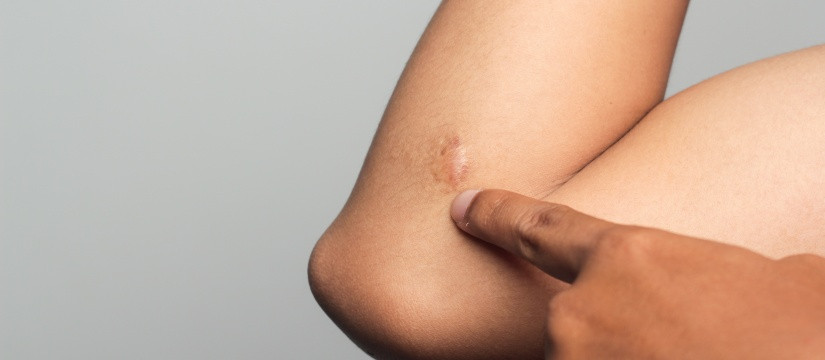Keloid scars are raised fibrous growths that develop at the site of an injury, surgery, or acne. They can be itchy, painful, and, for many, they pose an aesthetic concern. Treating keloid scars can be challenging, but various options are available. This article explores the effectiveness of different treatment methods for keloid scars, helping you understand which may be best for your situation.
What Are Keloid Scars?
Keloid scars occur when the body produces an excess of collagen during the healing process. Unlike normal scars, which fade over time, keloids can continue to grow beyond the original injury site, creating raised areas of tissue. They can appear in various colors, often darker than the surrounding skin, and may be found on any part of the body, though they are more common on the chest, back, and earlobes.
Effective Treatment Options for Keloid Scars
1. Corticosteroid Injections
Corticosteroid injections are one of the most common treatments for keloid scars. They help flatten the scar by reducing inflammation and collagen production. Typically, multiple sessions are required, and patients may start to see improvements after several weeks. This treatment is often effective but may not completely eliminate the keloid.
2. Surgical Removal
Surgical excision can effectively remove keloids, particularly if they are large or causing significant discomfort. However, there is a risk of the keloid returning, sometimes larger than before. To minimize this risk, doctors often combine surgery with other treatments, such as corticosteroid injections or radiation therapy.
3. Laser Therapy
Laser treatments can help reduce the size and appearance of keloid scars. Different types of lasers, such as pulsed dye lasers or fractional lasers, target the blood vessels in the scar tissue, helping to flatten and fade it. Laser therapy often requires multiple sessions, and while effective, results can vary.
4. Cryotherapy
Cryotherapy involves freezing the keloid with liquid nitrogen, which can help reduce its size. This method is often used in combination with other treatments, such as corticosteroid injections, for better results. Cryotherapy is generally safe and can be effective for smaller keloids.
5. Silicone Gel Sheets and Dressings
Silicone gel sheets are non-invasive and can help flatten keloid scars over time. These sheets create a moist environment, promoting healing while also providing pressure to the scar. For best results, they should be worn for several hours daily over an extended period.
6. Radiation Therapy
Post-surgical radiation therapy can help reduce the risk of keloid recurrence. It is typically considered for larger keloids or when surgery is not an option. Radiation therapy can be effective, but its long-term safety is still being studied.
7. Alternative Treatments
Other treatments, such as laser-assisted drug delivery, topical medications, and even acupuncture, have shown promise in some cases, but more research is needed to confirm their effectiveness. Always consult a dermatologist or a healthcare provider before starting any alternative treatments.
Limitations of Keloid Treatment
While various treatment options exist, it’s essential to recognize that keloid scars can be stubborn and may not respond entirely to treatment. Some limitations include:
- Risk of Recurrence: Many treatments, particularly surgical removal, carry a risk of the keloid returning.
- Variable Results: Effectiveness can vary significantly between individuals, influenced by factors like skin type, keloid size, and treatment history.
- Multiple Sessions Required: Many effective treatments require several sessions over weeks or months, necessitating time and financial investment.
- Potential Side Effects: Treatments, particularly surgical and laser options, can have side effects like pain, discoloration, and skin texture changes.
Frequently Asked Questions (FAQ)
1. Can keloid scars completely disappear with treatment?
While treatments can significantly reduce the size and appearance of keloid scars, complete disappearance is not guaranteed. Many patients experience improvement but may still have some visible scarring.
2. How long does it take to see results from keloid treatments?
Results can vary depending on the treatment method. For corticosteroid injections, improvements may be visible within several weeks, while surgical results may take longer to assess.
3. Are keloids hereditary?
Yes, keloids can be hereditary. Individuals with a family history of keloids are more likely to develop them.
4. Is it possible to prevent keloid scars?
While it may not be possible to prevent keloids entirely, prompt and proper wound care can help minimize the risk. Avoiding unnecessary surgeries and injuries can also reduce the chance of keloid formation.
5. Can over-the-counter creams help with keloid scars?
Over-the-counter creams may help improve the appearance of scars but are generally less effective than prescribed treatments or procedures specifically designed for keloids.
6. How do I choose the right treatment for my keloid scar?
Consulting a dermatologist is essential. They can assess your specific situation, discuss treatment options, and help you choose the most effective approach based on your needs.
7. Are there any side effects of keloid scar treatments?
Yes, some treatments can cause side effects, such as pain, redness, swelling, or skin discoloration. Discuss potential side effects with your healthcare provider before starting treatment.
8. Can I treat keloid scars at home?
While some home treatments, like silicone gel sheets, can help, more effective treatments typically require professional intervention. Always consult a healthcare provider for advice.
9. How much does keloid treatment typically cost?
Costs can vary widely depending on the treatment method, ranging from $100 to several thousand dollars. Check with your healthcare provider and insurance company for more accurate estimates.
10. Should I see a doctor if I suspect I have a keloid?
Yes, if you suspect you have a keloid or are concerned about a scar, it’s best to consult a dermatologist for proper diagnosis and treatment options.
With this information, you can better understand keloid scars and the treatments available, empowering you to make informed decisions about your skin health.
 Clinic Booking
Clinic Booking


 No Record
No Record